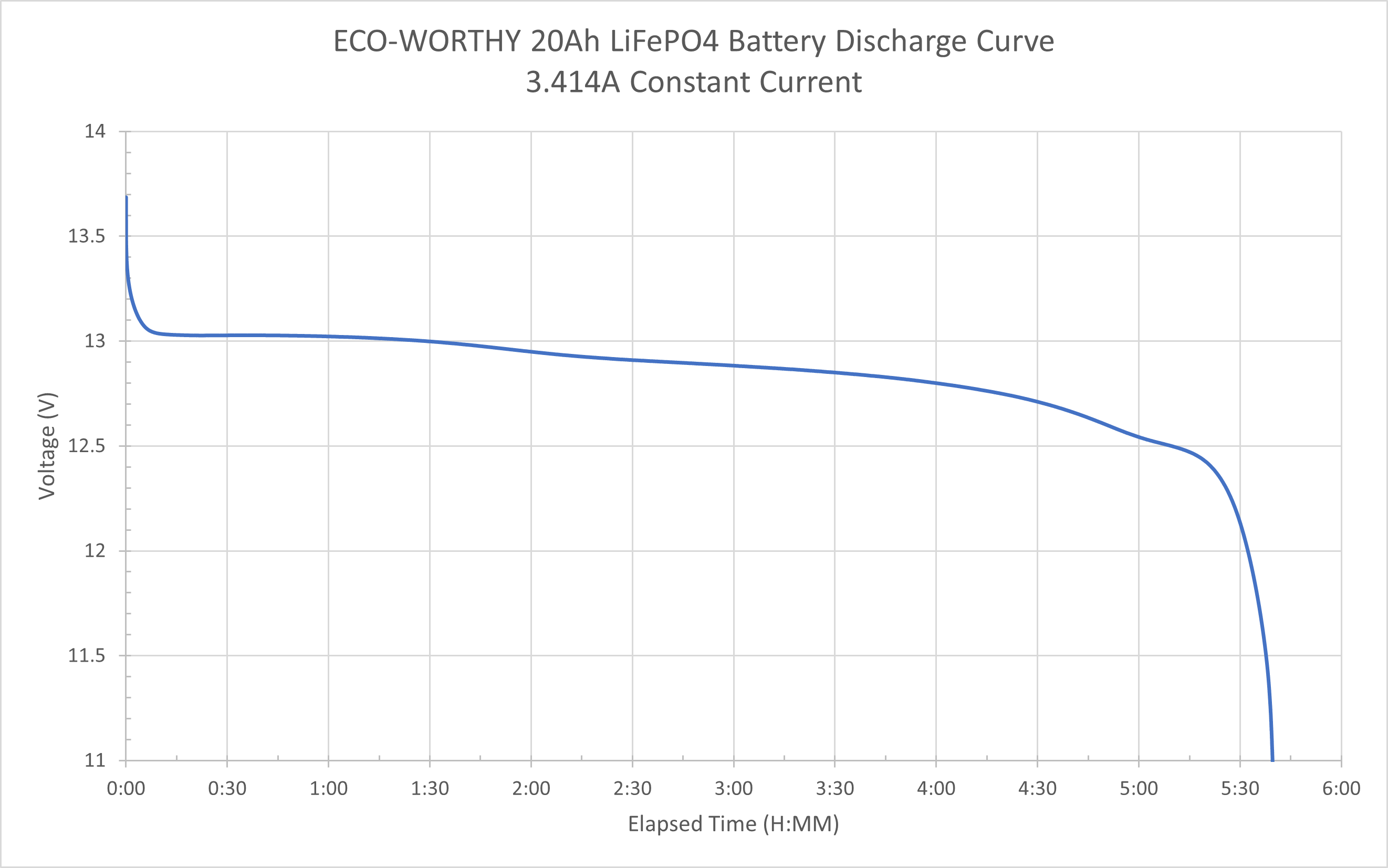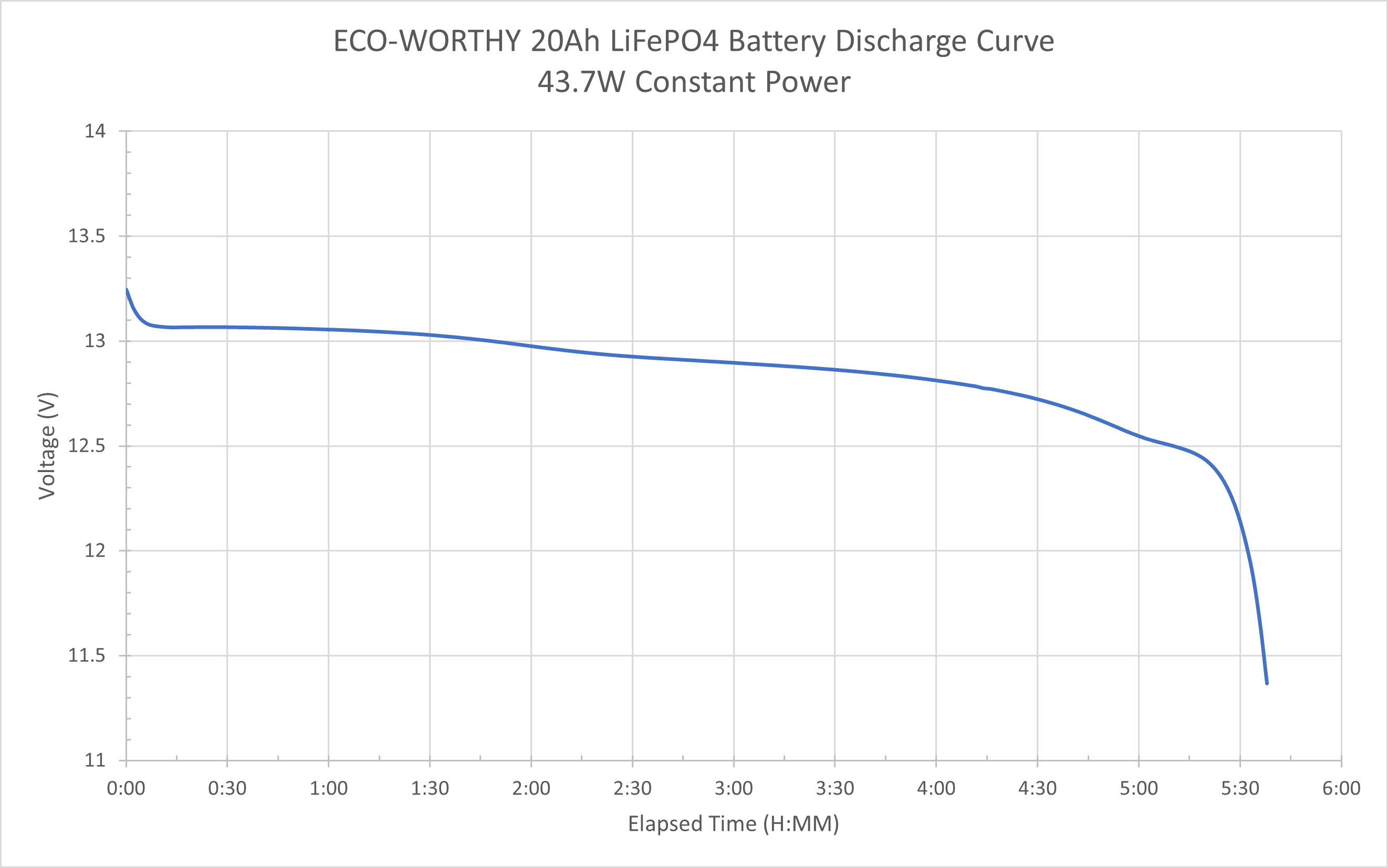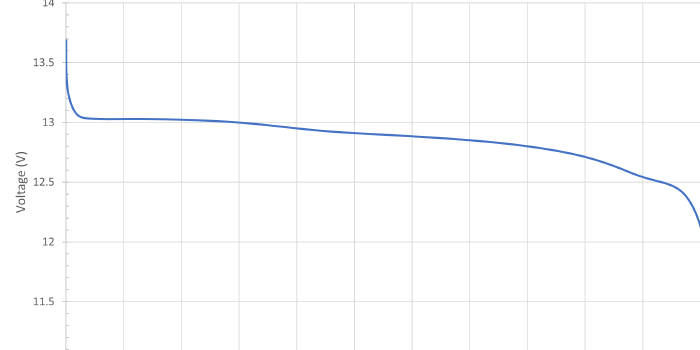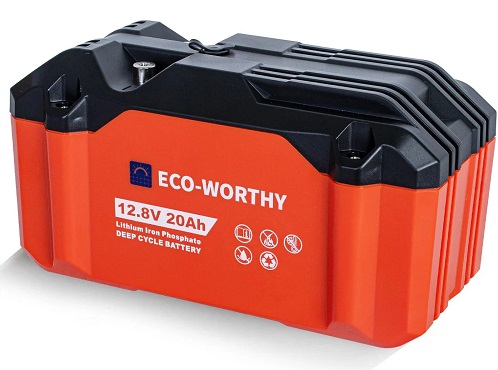Portable Battery Development
Background
I’m working on a way to power my setup in the middle of a field, so I can get unobstructed views of the rainy clouds. Ideally, it’ll be small and light enough to hike with, but capable of at least half a night of imaging.
It looks like many astrophotographers are using off-the-shelf power stations, an idea I initially planned to wholesale copy.
However, after some thinking in the shower:
- All I need is ~12V DC. I don’t need any inverters or converters to provide AC or USB power–that’ll be extra weight, space, expense, and energy inefficiency
- I definitely don’t want any bright screens or blinky lights
- I have banned cigarette lighter connectors from my life
What I really want is a battery.
Design parameters
- Energy density likely means a lithium battery of some sort. If that’s the case, I strongly prefer Lithium Iron Phosphate (due to it being slightly less explodey)
- Built-in BMS with overdischarge and overcharge protection would be awesome
- I cruised through the documentation for all my equipment and added up what the manufacturers claim to be the power requirements. Total: 43.7W
- Hopefully under 5 lbs
- My gear’s input voltage range is 11-15V1. More specifically, the ASIAIR Plus “will not boot” below 9V, and the AM3 throws a low voltage alarm at 10.8V
Battery choice
The ECO-WORTHY ECO-LFPYZ122001 is a 4S4P (12.8V nominal), 20 Ah LiFePO₄ battery in a pretty rugged case, with the added benefit of a 2.5mm x 5.5mm DC jack built in:
It weighs 4.9 lbs and is a fairly portable shape. Will it do the job?
Testing
I fully charged the battery, then performed a rundown test at room temperature. I chose 3.414A at the battery’s 12.8V nominal to simulate a draw of 43.7W.

Some findings from this test:
- The battery’s capacity at this discharge rate is 19.41 Ah;
- The BMS disconnects at 10.995V;
- The run time was 5 hours 39 minutes;
- The discharge curve is fairly flat (expected from this battery chemistry).
Conclusion
I’m happy with this battery! It looks like it will do exactly what I need. Here’s a rough comparison to an off-the-shelf power station:
| ECO-WORTHY Battery2 | Jackery Explorer 240 v23 | |
|---|---|---|
| Capacity | 256 Wh | 256 Wh |
| Weight | 4.9 lb | 7.9 lb |
| Size | ~180 ci, 8.7" x 4.5" x 4.6" | ~360 ci, 9.1" x 6.6" x 6.0" |
I’m not going to include a price discussion here, as the two products are vastly different solutions. I already have experience with LiFePO₄ batteries, as well as the chargers and accessories needed to safely deal with them–if I didn’t, I probably wouldn’t adventure in this direction.
As for next steps, it would be really nice to do some real-world data collection of my equipment’s power use, and maybe see how this battery does at lower temperatures.
Bonus Testing
I also ran another test, at constant power instead of constant current…but it looks pretty much the same.



